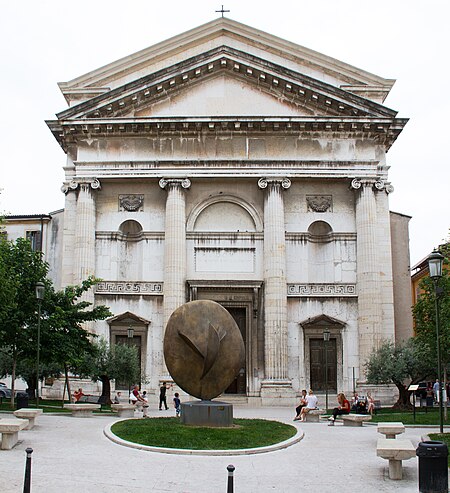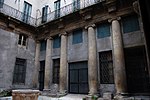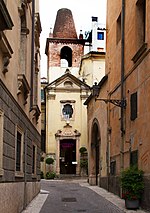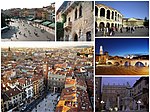San Nicolò all'Arena, Verona
17th-century Roman Catholic church buildings in ItalyBaroque architecture in VeronaNeoclassical architecture in VeronaNeoclassical church buildings in ItalyRelocated buildings and structures ... and 4 more
Roman Catholic churches completed in 1683Roman Catholic churches in VeronaRomanesque architecture in VeronaTheatine churches

San Nicolò all'Arena is a Roman Catholic parish church in the historic centre of Verona, Italy dedicated to Saint Nicholas. It is located close to the Arena, a well-preserved 1st century AD Roman amphitheatre. The present Baroque building was constructed between 1627 and 1683 on the site of an earlier Romanesque church which had existed since the 12th century or earlier. The church's façade remained incomplete until the neoclassical façade of the church of San Sebastiano was relocated to San Nicolò in the 1950s, after the former church was destroyed during World War II.
Excerpt from the Wikipedia article San Nicolò all'Arena, Verona (License: CC BY-SA 3.0, Authors, Images).San Nicolò all'Arena, Verona
Piazza San Nicolò, Verona Veronetta
Geographical coordinates (GPS) Address External links Nearby Places Show on map
Geographical coordinates (GPS)
| Latitude | Longitude |
|---|---|
| N 45.439722222222 ° | E 10.995555555556 ° |
Address
Chiesa di San Nicolò
Piazza San Nicolò
37121 Verona, Veronetta
Veneto, Italy
Open on Google Maps










